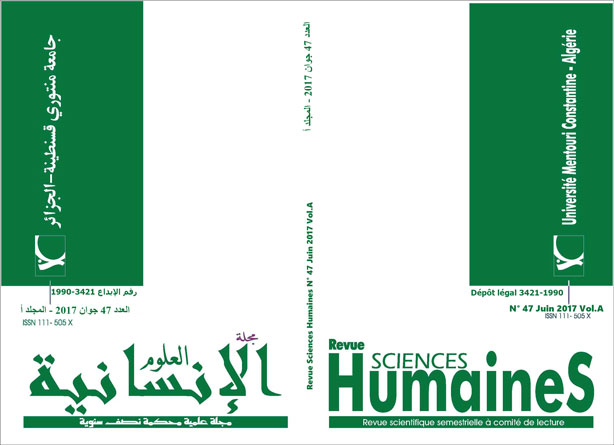The Effect of Fluency Oriented Reading Instructionon EFL Students’Reading Fluency and Comprehension
Keywords:
Fluency Oriented Reading Instruction, FORI, Reading Fluency, RF, Automaticity, Reading Prosody, Correct Word Per Minute, CWPM, Reading Comprehension, RCAbstract
This paper discusses and examines the effects of a fluency reading instruction cycle onstudents’ progress in there ading skill. To reach this objective, the study implemented the Fluency Oriented Reading Instruction (FORI) approach, a research-based integrated fluency routine framework, to determine if the components of reading fluency (automaticity, word recognition accuracy, prosody, and comprehension) improve. The present research was conductedatthe department of English in the ENS-C where an experimental pretest-posttest with control group design was used. Pretest and posttests of reading fluency, reading comprehension and reading prosody were administered, and a t test was used to compare the means of correct word per minute (CWPM), prosody, and comprehension within an experimental group and a control group. The results indicated that the FORI is an effective approach to improve students’reading fluency and comprehension as demonstrated by CWPM improvement, prosody gains, and comprehension achievements as well.Downloads
References
Clark, C. H. (1995). Teaching Students about Reading: A Fluency Example. Reading Horizons, Vol 35, No.3, 250-266.
Day,R.R&Bamford,J.(1998).Extensive Reading in the Second language Classroom. Cambridge University Press.
Fuchs, L.S, D. Fuchs, M.K Hosp and J. Jenkins. (2001). Oral Reading Fluency as an Indicator of Reading Competence: Theoretical Empirical and Historical Analysis. Scientific Studies of Reading, vol 5, n° 3, (239-256), Lawrence Arlbaum Associates.
Grab, W.(2004).Research on Teaching Reading.Annual Review of Applied Linguistics. Cambridge University Press, (44-69)
Grab, W.(2010). Fluency in reading—Thirty-five years later. Reading in a Foreign Language Volume 22, No. 1 , (71-83)
Hapstak, J. A. & Tracey, D. H. (2007). Effects of Assisted Repeated Reading on Students of Varying Reading Ability: a Single Subject Experimental Research Study. Reading Horizons Journal, Vol 47, No.4, 315-334.
Hudson, R.F, Pullen C.P and Lane, H.B.(2005). Reading Fluency Assessment and Instruction: What, Why and How? TheInternational Reading Association. (702-714)
Kuhn, M.R & Stahl, S.A. (2003). Fluency: A Review of Developmental and Remedial Practices. Journal of Educational Psychology. Vol 95, Issue 1, (3-21)
Kuhn, M.R, P.G Schwanenflugel, R.D Morris, L.M Morrow, D.G Woo, E.B Meisenger, R.A Savcik, B.A Bradley and S.A Stahl.(2006).Teaching Children to Become Fluent and Automatic Readers. Journal of Literacy Research. Vol 38, n° 4, (357-387), Lawrence Erlbaum Associates.
Kuhn, M.R, P.G Schwanenflugel.(2006). All Oral Reading Practice Is not Equal or How Can I Integrate Fluency into my Classroom. Literacy Teaching and Learning. Vol 11, n° 1, (1-20)
Kuhn, M.R, G.W Deborah.(2008). Fluency-Oriented Reading Instruction:TwoWhole Classroom Approaches.The Guilford Press, Chapter 2, (17-35)
Kuhn, M.R, P.G Schwanenflugel and E.B Meisenger. (2010). Aligning Theory and Assessment of Reading Fluency: Automaticity, Prosody and Definitions of Fluency. Reading Research Quarterly, vol 45, n° 2, (230-251).
Meisinger, E. B, Schwanenflugel, P. J, Bradely, B. A. &Stahl, S. (2004). Interaction Quality during Partner Reading. Journal of Literacy Research, Vol 36, No. 2, 111-140.
National Reading Panel (2000). Teaching Children to Read: An Evidence Based Assessment of the Scientific Research Literature on Reading and its Implications for Reading Instruction. Washington D.C. National Institute of Child Health and Human Development.
Nation,I.S.P.(2009).Teaching EFL/ESL Reading and Writing. Routlege, Taylor &Francis
Nation,P. (2014). Developing Fluency. In Muller, T, Adamson, J, Brown, P.S, Herder, S & Basin stoke (eds), Exploring EFL Fluency in Asia. Palgrave Macmillan .Chapter 1, 11-25.
Nichols, W.D, W.H Rupley& T. Rasinski. (2008). Fluency in Learning to Read for Meaning: Going Beyond Repeated Readings. Literacy Research and Instruction, Vol 48, n° 1, pp(1-13)
Osborn, J, F Lehr & E.H Hiebert (2003). A Focus on Fluency. Pacific Resources for Education and Learning.
Rasinski, T. (2003). The Fluent Reader: Oral Reading Strategies for Building Word Recognition, Fluency, and Comprehension. Teaching Resources/ Scholastics
Rasinski, T. (2004). Assessing Reading Fluency. Pacific Resources for Education and Learning. Honolulu. Hawaii.
Rasinski T, Pedak, N. (2005). Three Minutes Reading Assessment: Word Recognition, Fluency and Comprehension. Scholastic Teaching Resources.
Samuels,S.J.(1976). Automatic Decoding and Reading Comprehension. Language Arts, vol 53, n° 3, (323-325)
Samuels,S.J.(1979). How The Mind Works When Reading:Describing Elephants No One Has Ever Seen. In The Theory and Practice of Early Reading-Volume I-, Weaver, P A and Resnick L.B (eds). Lawrence Erlbaum Associates. Chapter: 14, (343-368)
Samuels, S.J. (2002). Reading Fluency: Its Development and Assessment.InWhat Research Has to Say about Fluency Instruction, S.J, Samuels and A.E, Farstrup (eds). International Reading Association. 3rd edition, Chapter 8, (166-183).
Stahl, S.A, K.M Heubach. (2005). Fluency Oriented Reading Instruction. Journal of LitracyResearch,vol 37, n° 1, (25-60).
Schwanenflugel, P.(2008). Fluency Development and Whole Class Instruction: Approaches for Shared Reading.The Guilford Press, chapter 3, (.41- 77).
Taguchi, E. &Gorsuch, G. J. (2002). Transfer Effects of Repeated EFL Reading on Reading New Passages: A Preliminary Investigation. Reading in a Foreign Language, Vol: 14, n°(1), (43-65).
Taguchi, E, Gorsuch, G. J &Takayasu-Maass, M. (2004). Developing Reading Fluency in EFL: How Assisted Repeated Reading and Extensive Reading Affect Fluency Development. Reading in a Foreign Language.vol 16, n°2, (70-96).
Taguchi, E,Gorsuch, G. J &Sasamoto, E. (2006). Developing Second and Foreign Language Reading Fluency and its Effect on Comprehension. The Reading Matrix, Vol. 6, No.2.
Willis, J. (2008). Teaching the Brain to Read: Strategies for Improving Fluency, Vocabulary, and Comprehension. Association for Supervision and Curriculum Development (ASCD).
Dissertations
Thornton, P.G. (2008). Effect of Modified Fluency-Oriented Reading Instruction on African American Boys’ Oral Reading Fluency and Attitude towards Reading. (published PHD thesis). Faculty of Auburn University.












